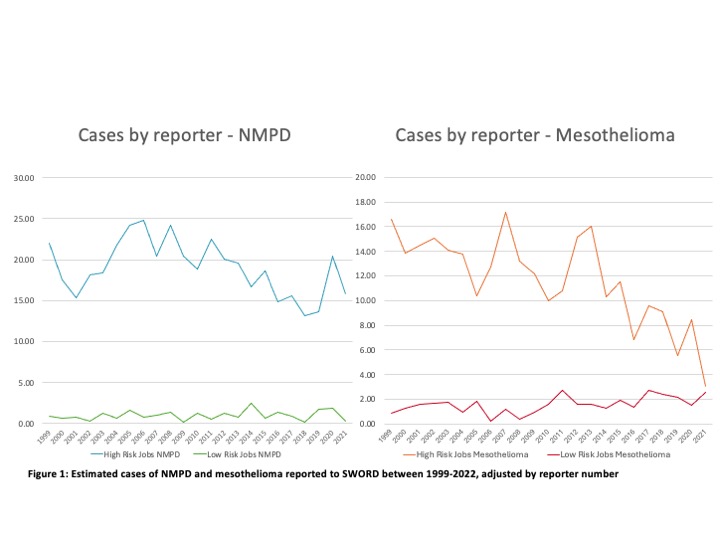Abstract
Background
ARPD including malignant (mesothelioma) and non-malignant pleural disease (NMPD: pleural thickening, effusion, and plaques) are common in the UK. ARPD is more common in certain occupations. We describe changes to ARPD reported to the Surveillance of Work-related and Occupational Respiratory Disease (SWORD) scheme between 1999 - 2022.
Methods
ARPD cases with complete SOC2010 and reporter data were included and cases weighted for core/sample reporting. Occupations were classified as ?high? or ?low? risk based on proportional mortality ratios. Estimated cases were adjusted for temporal changes in reporter numbers.
Results
In total 5957 NMPD and 2435 mesothelioma were reported. Ten percent of mesothelioma and six percent of NMPD were in low-risk jobs. In 7844 high-risk jobs the commonest were fitter (14%), joiner (11%), electrician (10%), lagger (8%), and labourer (8%). In 496 low-risk jobs the commonest were lorry driver (11%), fireman (5%), seaman (5%), cleaner (5%), and non-construction labourer (4%). Over the study period mesothelioma and NMPD cases in high-risk jobs fell (figure 1). For low-risk jobs, NMPD cases remained low and for mesothelioma slightly increased.
Conclusion
ARPD cases were commonly reported to SWORD. A significant minority of cases occurred in low-risk jobs where estimated mesothelioma cases have slightly increased. Clinicians should be aware of the risk of ARPD across the job spectrum.
